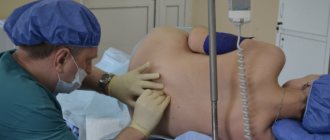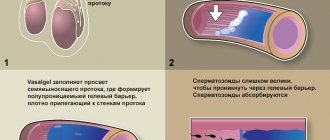Photo: UGC Multiparous women are considered experienced because they already gone through the extreme challenge called “childbirth.” However, they often let down by the confidence that they not the harbingers of labor . As a result, the pregnant woman either sent to late or gives birth in extreme conditions at home or in an emergency room. To prevent this from happening, familiarize yourself with the signals that your body gives in anticipation of childbirth.
Attention! The material is for informational purposes only. You should not resort to the treatment methods described herein without first consulting your doctor.
The due date for each pregnant woman depends on many factors. The main ones are the woman’s health status, the menstrual cycle, the size and sex of the fetus. If the pregnancy proceeded normally, there was no gestosis in the later stages, the weight and height of the fetus correspond to the average (3–3.5 kg and 50–55 cm), the cycle is on average 28 days, then childbirth will occur at 39–42 weeks.
In multiparous women, this period may occur earlier - at 38–40 weeks, because the body “remembers” the previous experience and all mechanisms of childbirth are launched faster than in primiparous women. This moment can play a cruel joke on a woman who is giving birth to a second, third, etc. child.
Previous experience weakens vigilance; a pregnant woman may not pay attention to the first signs of labor and not seek medical help in time. It should be remembered that labor progresses faster in multiparous women, so the warning signs of an imminent birth cannot be ignored. If the listed symptoms appear, then the baby will be born soon.
Photo: unsplash.com: UGC
The body will give the following signals of approaching labor:
Training contractions
Single and short-term influxes of pain in the lower back and lower abdomen, which go away if the pregnant woman takes a warm shower and lies down, are called false or training contractions. In multiparous women, they appear 5–10 days before birth, and in women who are carrying their first child, 15–20 days.
How do real contractions begin and how to distinguish them from false ones? If the pain in the uterus becomes regular, intensifies, and the time between attacks decreases, then real prenatal contractions have begun.
ABC of childbirth
ABC of childbirth. Harbingers of childbirth. Periods of childbirth. Postpartum period. Hygiene. Contraception .
Childbirth is the process of expulsion or removal from the uterus of the baby and placenta (placenta, membranes, umbilical cord) after the fetus reaches viability. Normal physiological childbirth occurs through the natural birth canal. If the child is removed by caesarean section, then such a birth is operative.
The average duration of physiological labor ranges from 7 to 12 hours for primiparous women, and up to 10-12 hours for multiparous women. Labor that lasts 6 hours or less is called rapid; labor that lasts 3 hours or less is called rapid.
How to determine the approach of labor?
The approach of childbirth can be judged by the following harbingers.
1. “Dropping of the abdomen” At the end of pregnancy (usually 2-3 weeks before birth), the fundus of the uterus drops, which is a consequence of the descent of the fetal head into the pelvis. In this regard, the tightness of the diaphragm stops, pregnant women note that it becomes easier for them to breathe, heartburn and belching decrease. However, they are replaced by a feeling of fullness in the pubis and some increased urination. You should not be afraid of such phenomena, as they are the norm during this period.
2.Changing stool. The increase in frequency and change in the consistency of physiological secretions on the eve of childbirth is also associated with an increase in the level of estrogen and the removal of fluid from the body of the expectant mother. Similar changes in the body of a non-pregnant woman are observed during menstruation. Stools may become more frequent up to 2-3 times a day, and at the same time some dilution of the stool may be observed. A more frequent urge to defecate, a sharp change in the color and smell of stool, combined with nausea and vomiting, is a reason to consult a doctor - such “harbingers” may mask a foodborne illness.
3.Discomfortable sensations. In the last weeks before giving birth, many pregnant women notice discomfort in the lower abdomen and in the sacrum area (the area slightly below the lower back). Such changes in the well-being of the expectant mother are caused by stretching of the pelvic ligaments and increased blood flow to the pelvic organs. Usually these minor sensations, described as a feeling of “slight languor” in the lower abdomen, are comparable to similar phenomena during the period before or during menstruation. Discomfort, as well as training contractions, most often bother the expectant mother in the morning and evening hours. The level of discomfort is minimal, it should not worry the expectant mother and does not require medical intervention.
All precursors of labor may appear during the last two weeks before birth; their presence, as well as absence, is normal and does not require visiting a doctor. It is important to learn to listen to changes in your body, not to be afraid of changes in well-being associated with prenatal preparation, and most importantly - to have time to mentally and physically prepare for the most important event - the birth of a baby.
4. Changes in posture Prolapse of the uterus with the fetus affects the shift in the center of gravity. The woman takes on a characteristic “proud look,” her head is usually thrown back somewhat, and her gait becomes “duck-like.” The expectant mother walks more slowly, as if shifting her whole body from foot to foot, but she herself may not notice this.
5. Reducing a pregnant woman's weight Closer to childbirth, a pregnant woman's weight gain may stop or even decrease. Most women associate this with a decrease in appetite, which is also noted during this period.
6 Passing of the mucus plug A “mucus plug” is a small lump of brownish-brown mucus, sometimes streaked with blood, that remains in the cervical canal throughout pregnancy. It contains a large amount of antimicrobial substances and prevents infections from the vagina from entering the uterine cavity. At the end of pregnancy, as a result of the shortening and opening of the cervix, this lump comes out of it. This usually happens gradually over one and a half to two weeks before giving birth. But it also happens that this mucous secretion of the cervical glands comes out of the vagina in the form of a kind of “plug” immediately before childbirth.
7 False contractions At the end of pregnancy, expectant mothers begin to feel contractions of the uterus, which before birth take on the character of nagging pain in the sacrum and lower abdomen - these are precursor contractions. Their difference from real labor contractions is that they are short, irregular, and do not lead to shortening and smoothing of the cervix, opening of the uterine pharynx and the formation of a functional amniotic sac. . Often women arrive in agitation; they feel like they are in the throes of labor and need to go to the delivery room urgently. But when the doctor, after an examination, calmly reports that the woman is not yet in labor, the false contractions stop right before our eyes. I would like to note that the precursors of labor in primiparous women often go unnoticed at all or include 2-3 signs. However, with repeated births, pregnant women notice almost all of the changes listed above, the most striking and clear of which are false contractions and the passage of the mucus plug.
So when is it still necessary to go to the maternity hospital? When can you be sure that labor has already begun?
- If you have regular contractions
— Regular contractions are pulling sensations in the lower abdomen or lower back that appear again, after rest, at certain intervals. If contractions occur at predictable intervals, become more frequent, longer, and stronger - it’s time to go to the maternity hospital. If during repeated births the interval between contractions is short, you should go to the maternity hospital immediately.
- When amniotic fluid ruptures,
—The discharge of amniotic fluid from the genital tract may be abundant or there will be just a little “water” (leakage), regardless of whether you have contractions or not, you need to go to the maternity hospital. .
3 If bloody discharge appears from the genital tract
——The appearance of bloody discharge should be treated carefully not only throughout pregnancy, but also before childbirth, when it already seems that the baby is not in any danger. Actually this is not true. Just before birth, a pregnancy complication can also occur, for example, premature abruption of a normally located placenta, which requires emergency obstetric care. you should go to the maternity hospital immediately if such a symptom appears.
Periods of childbirth.
First stage of labor - dilation of the cervix
The first stage of labor lasts from the first regular contractions until the full dilatation of the cervix and is the longest. For primiparous women, it ranges from 8 to 10 hours, and for multiparous women, 6-7 hours.
During the entire first stage of labor, the condition of the mother and her fetus is constantly monitored. They monitor the intensity and efficiency of labor, the condition of the woman in labor (well-being, pulse rate, breathing, blood pressure, temperature, discharge from the genital tract). The fetal heartbeat is regularly listened to, but most often constant cardiac monitoring is performed. During normal labor, the baby does not suffer during uterine contractions, and its heart rate does not change significantly. During labor, it is necessary to assess the position and advancement of the head in relation to pelvic landmarks. A vaginal examination during labor is performed to determine the insertion and advancement of the fetal head, to assess the degree of opening of the cervix, and to clarify the obstetric situation.
Mandatory vaginal examinations are performed in the following situations: when a woman enters the maternity hospital; when amniotic fluid ruptures; with the onset of labor; in case of deviations from the normal course of labor; before anesthesia; when bloody discharge appears from the birth canal. One should not be afraid of frequent vaginal examinations; it is much more important to ensure complete orientation in assessing the correct course of labor.
Second stage of labor - expulsion of the fetus
The period of expulsion of the fetus begins from the moment the cervix is fully dilated and ends with the birth of the child. During childbirth, it is necessary to monitor bladder and bowel function. Overfilling of the bladder and rectum prevents the normal course of labor. To prevent the bladder from overflowing, the woman in labor is asked to urinate every 2-3 hours. In the absence of independent urination, catheterization is used. Timely emptying of the lower intestine is important (enema before childbirth and during a prolonged period). Difficulty or absence of urination is a sign of pathology.
From the moment the uterine os opens completely, the second stage of labor begins, which consists of the actual expulsion of the fetus, and ends with the birth of the child. The second period is the most critical, since the fetal head must pass through the closed bony ring of the pelvis, narrow enough for the fetus. When the presenting part of the fetus descends to the pelvic floor, contractions are joined by contractions of the abdominal muscles. Attempts begin, with the help of which the child moves through the vulvar ring and the process of his birth occurs.
The third stage of labor is the afterbirth
The third period (afterbirth) is determined from the moment of birth of the child until the separation of the placenta and the discharge of the placenta. In the afterbirth period, during 2-3 contractions, the placenta and membranes are separated from the walls of the uterus and the afterbirth is expelled from the genital tract. In all women giving birth in the afterbirth period, to prevent bleeding, drugs that promote uterine contraction . After birth, a thorough examination of the child and mother is carried out to identify possible birth injuries. During the normal course of the afterbirth period, blood loss is no more than 0.5% of body weight (on average 250-350 ml). This blood loss is physiological, since it does not have a negative effect on the woman’s body. After expulsion of the placenta, the uterus enters a state of prolonged contraction. When the uterus contracts, its blood vessels are compressed and bleeding stops.
It should be noted that in some cases, preliminary hospitalization in a maternity hospital is necessary to prepare for delivery. In the hospital, in-depth clinical, laboratory and instrumental examinations are carried out to select the timing and method of delivery. An individual birth management plan is drawn up for each pregnant woman (mother in labor). The patient is introduced to the proposed delivery plan. Obtain her consent to the proposed manipulations and operations during childbirth (stimulation, amniotomy, cesarean section).
Caesarean section is not performed at the request of the woman , since it is an unsafe operation, but only for medical reasons (absolute or relative). Childbirth in our country is not carried out at home, but only in an obstetric hospital under direct medical supervision and control, since any birth is fraught with the possibility of various complications for the mother, fetus and newborn. The birth is conducted by a doctor , and a midwife, under the supervision of a doctor, provides manual assistance at the birth of the fetus and carries out the necessary treatment of the newborn. The birth canal is examined and repaired by a doctor if it is damaged.
Labor expulsion forces - contractions and pushing - help the child descend into the small pelvis, pass through it, expand the vagina and come out through it.
Contractions are contractions of the muscles of the uterus, with the help of which its cervix opens. At first they are not strong, repeat every 15-20 minutes and last 10-15 seconds. The closer the birth itself becomes, the more often and more strongly the uterus contracts. At the end, the intervals between contractions are 1.5-2 minutes, and they last 1-1.5 minutes. Contractions can be quite painful.
When pushing, the abdominal and diaphragm muscles contract. Under their influence, the pressure in the abdominal cavity increases. Attempts can be involuntary, but the woman herself can regulate their strength by pushing. The midwife and doctor tell the woman in labor when to push and when to rest and gain strength. At first, the pushing is not very strong, but during the period when the fetus leaves the small pelvis, it begins to increase and occurs every 2-3 minutes.
Contractions and pushing help the fetus move towards the pelvis and beyond. In order to endure them as easily as possible, you need to learn proper breathing and the ability to relax your muscles at the right moment throughout your pregnancy. This will help relieve pain during contractions and make labor easier.
Postpartum period
The postpartum period includes the time from the moment of birth of the placenta until the completion of the reverse development of the changes that occurred in the woman’s body during pregnancy.
General information
The duration of this period is 6 weeks. In most cases, it proceeds normally, but sometimes dangerous complications arise that require urgent treatment.
Changes in a woman's body after childbirth
Immediately after the birth of the placenta, the uterus begins to contract strongly and within a few minutes takes on a rounded shape. The wall of the uterus becomes dense and the gaping vessels of the placental site are compressed. After just 2 weeks, its size corresponds to a non-pregnant uterus. Within a few days after childbirth, the surface layer of the inner lining of the uterus sloughs off and is released in the form of bloody discharge. Epithelization of the uterus ends by 2-3 weeks after birth.
The cervix returns to its normal state by the end of the first week. But the vaginal walls remain swollen for 3-4 weeks after childbirth.
Changes in hormonal status that occur after childbirth stimulate the onset of lactation. In the first three days, the mammary glands secrete colostrum, which differs from milk in its higher content of protein and immunoglobulins. It's not much, but it's 10 times more nutritious than milk. Therefore, even a small amount of colostrum is enough to feed the child. In order to have a sufficient amount of milk in the future, the most important thing is to regularly put the baby to the breast and not supplement him with anything. Usually milk comes in at the end of 3 or the beginning of 4 days after birth. Within a few hours, the mammary glands harden, increase in volume, become painful, and the temperature rises. These manifestations gradually disappear with the correct feeding regimen.
Postpartum care
In the delivery room, immediately after childbirth, all postpartum women undergo an examination of the cervix and soft tissues of the birth canal using mirrors. If trauma to the tissues of the birth canal is detected, they must be sutured.
In the first 24 hours after birth, the postpartum woman should be in the maternity ward under the constant supervision of a doctor and midwife. This is due to the fact that most often complications associated with the pathology of contractile activity of the uterus after childbirth, as well as with anomalies of placental attachment, manifest themselves in the form of bleeding, precisely in the first hours after childbirth. One of the main tasks of adequate management of the postpartum period is the prevention of purulent-inflammatory diseases in the mother and newborn. In the postpartum ward, the postpartum woman must be monitored daily by a doctor and midwife. At the same time, the general condition of the patient is assessed, pulse, blood pressure, body temperature are measured (twice a day), the condition of the external genitalia, uterus, mammary glands, the nature of discharge and physiological functions are monitored.
In the normal course of the postpartum period, the patient can be discharged from the maternity hospital after vaccinating the child with BCG for 3-4 days under the supervision of a doctor at the antenatal clinic. The first examination after childbirth in the antenatal clinic is carried out 2 weeks later, the next one - 2 months after birth. By this time, the size of the uterus and birth canal should return to their original state.
Hygiene rules after childbirth
You should take a shower daily and wash your face 2-3 times a day. It is better to choose underwear and bed linen made of cotton fabric. Underwear must be changed every day, and pads at least every 4 hours. Remember that in the postpartum period taking a bath and swimming in natural bodies of water is contraindicated. Be sure to check with your doctor what methods of hygiene and treatment of the perineum are necessary in your particular case.
Possible problems
You may be bothered by bloody discharge from the vagina. As we already said, this is normal. The first 2 - 3 days the discharge is quite heavy, like in the first days of menstruation. Then they become smaller and acquire a brownish-brown color. A common occurrence during the postpartum period is cramping or nagging pain in the lower abdomen. Contractions of the uterus are always accompanied by some pain. The pain may worsen during breastfeeding. Usually the pain goes away by 4-7 days after birth.
Perform postpartum exercises - they help reduce pain. If you find this pain difficult to bear, painkillers may be used. Pain in the perineum is especially troubling for women who have suffered perineal ruptures during childbirth. Healing usually takes 7-10 days. If pain is severe, ask your doctor to prescribe pain relief.
In the first days after childbirth, especially long-term ones or those accompanied by surgical intervention, postpartum women often experience urinary retention. In this case, urine is released using a catheter.
A woman in labor usually has her first stool 2-3 days after birth. Exercising helps normalize bowel function. If there is no stool on the 4th day, then you can use a laxative suppository.
After the first feedings, women may develop cracked nipples. To prevent this from happening, you need to put the baby to the breast for no longer than 5-7 minutes in the first 2-3 days after birth. You can use a special cream to prevent cracked nipples. Before each feeding you should wash your hands with soap. It is also necessary to wash the mammary glands with warm water and baby soap before and after each feeding, from the nipple to the armpit, and dry with a sterile diaper. After feeding, the remaining milk must be expressed until the mammary gland is completely emptied to avoid stagnation. This helps improve lactation and prevents infection of the mammary glands.
Contact your doctor immediately if:
- you have heavy bloody discharge from the vagina with clots, bright red in color, you have to change several pads within an hour (symptoms of uterine bleeding); - sharply painful lumps in the chest appeared in combination with a high temperature (such symptoms may be a sign of mastitis); - an unpleasant odor of vaginal discharge in combination with an increase in temperature, chills (such signs may indicate the onset of inflammation in the uterine cavity); - opening of a suture after a cesarean section with unpleasant-smelling discharge or blood; - increased pain in the area of the perineal incision, the appearance of discharge with an unpleasant odor (signs of infection or suture dehiscence); - redness, painful areas on the legs, swollen, hot to the touch (symptoms of the onset of thrombophlebitis).
The baby was born, a little time passed, and mom and dad were already accustomed to their new responsibilities and new daily routine. In general, family life is gradually returning to normal. Naturally, there is a place for sex in it. But the onset of a second pregnancy - at least for some time - is usually not included in the plans of young parents, which means that you need to think about contraceptive methods that are safe and effective.
Making a choice
Let's start with the fact that for the first six weeks after childbirth, obstetricians and gynecologists advise abstaining from sexual relations. At this time, the uterus has not yet completely contracted, the wound surface in it has not completely healed, there is constant bleeding, which means there is a risk of introducing some kind of infection into the uterus. Therefore, you should wait until the woman’s health returns to normal and only then return to sex.
To resolve the issue of contraception in the postpartum period, you should consult your obstetrician-gynecologist, because this is individual and depends on many factors.
Therefore, before starting sexual activity after childbirth, it is imperative to decide about contraception.
Well, which contraceptive to choose will depend primarily on whether the mother is breastfeeding.
Obstetrician-gynecologist at the antenatal clinic
City clinic No. 4, Grodno
Beetroot L.Ya.
The stomach drops
Not only the mother, but also the child is preparing for childbirth. A week or two before birth, the fetus takes on a prenatal position: it turns its head down and enters the pelvic space. Outwardly, this is reflected in the position of the abdomen: if previously it was almost up to the pregnant woman’s nose, now it goes down as far as possible. A woman may feel sharp pain in the pubic area when walking. This is how the baby’s head presses on the bones of her pelvis.
Before giving birth, heartburn and shortness of breath caused by compression of the diaphragm recede, the expectant mother may lose a little weight - swelling will go away.
Specialists
Kuznetsova Tatyana Vladimirovna
Obstetrician-gynecologist with 35 years of experience, chief physician of the center.
Tatyana Vladimirovna’s specialty is the diagnosis and treatment of infertility. Performs surgical interventions and pregnancy monitoring. Recipient of the state award "Order of Honor".
Makatsaria Alexander Davidovich
Obstetrician-gynecologist, famous scientist, founder of clinical hemostasiology.
It will help you plan and maintain your pregnancy if you have had cases of fetal loss, thrombosis, obstetric complications or blood coagulation disorders. You can also contact your doctor for a transcript of hemostasis tests.
Egorova Elena Borisovna
Obstetrician-gynecologist of the highest qualification category.
Specializes in peritoneal factor of infertility in women and management of problematic pregnancies.
It will provide effective help if, before conception, you were diagnosed with adhesions, endometriosis, erosion or other pathologies of the cervix.
Akinshina Svetlana Vladimirovna
Obstetrician-gynecologist, hemostasiologist with an academic degree.
Pregnancy management S.V. Akinshina will help avoid severe complications: gestosis, placental insufficiency, fetal loss syndrome.
The doctor's expertise includes hemostasis disorders and immunological infertility.
Bitsadze Victoria Omarovna
Gynecologist-hemostasiologist, professor, doctor of medical sciences.
The doctor's profile is management of high-risk pregnancies, including in women with genetic thrombophilia and a tendency to spontaneous bleeding. Develops effective treatment regimens for infertility associated with autoimmune pathologies and hemostasis disorders.
Water breaks
This symptom can be easily missed or not noticed. The waters will not necessarily spill once and abundantly. They may leak: liquid appears drop by drop and flows down the inside of the thigh in a small stream.
Some pregnant women, especially multiparous women, may confuse the breaking of water with involuntary urination. Due to the pressure of the uterus on the bladder, its walls weaken. A pregnant woman may not feel how small amounts of urine are involuntarily excreted. If you visit the restroom and droplets do not stop appearing, it means your water is breaking and you should prepare a birthing bag.
When can multiparous women notice the first warning signs?
The body of each woman in labor is unique in its own way. No one can predict when labor will begin in a mother giving birth again. We can only highlight the average indicators: 37-38 weeks mark the beginning of the appearance of the first signs of labor in multiparous women. Most often, the subsequent pregnancy ends at 38 weeks. The baby is considered fully term and ready for life outside the uterus.
Even doctors find it difficult to determine exactly when labor will begin.
We recommend studying useful information about coronavirus and pregnancy.
Change in stool and nausea
Some pregnant women may experience changes in stool before giving birth and diarrhea. However, this symptom does not necessarily herald the approach of labor. Sometimes contractions are disguised as the urge to defecate. Do a cleansing enema. If the pain does not stop, then childbirth is approaching.
Another relative sign of the onset of labor is nausea. If it appears along with cramping pains, then the pregnant woman has entered the labor phase. Nausea is the result of oxytocin, a hormone that stimulates uterine contractions.
Photo: unsplash.com: UGC
When is it time to go to the maternity hospital?
If a woman notices the following symptoms, then she should immediately go to the maternity hospital, especially if this is not her first birth:
- Discharge of amniotic fluid.
- Bleeding from the genital tract.
- Regular contractions lasting at least an hour, spaced 5 minutes apart and lasting 60 seconds.
- The intensity of pain during contractions is so strong that the woman in labor cannot help but notice them and relax.
So, although no one can predict the exact date of birth, a woman giving birth again is already familiar with this process, and will be able to know and feel that labor is just around the corner. Each woman in labor is individual, some may not have any warning signs at all, while others will experience them all at once. It is important for a woman to visit her doctor on time, who will suggest the most correct decision in any situation. But we can say with certainty that any woman should know the harbingers of the onset of labor, and how long labor lasts for multiparous women, in order to prepare her body for such an important and complex process.
Intimate life
Previously, all doctors unanimously opposed sex so late in pregnancy. This was justified by the fact that during orgasm the uterus contracts, which can lead to the onset of labor. At this point in time, this theory is not considered correct. Doctors point out that a woman should rely on her own desires and listen to her body. If discomfort and fatigue reduces attraction to a sexual partner, then you should not overstep yourself.
If a woman feels the need for intimacy, then she should not deny herself either. Sex is a gentle preparation of the cervix for an imminent birth, because male sperm contains a special hormone (prostaglandin), which makes it more elastic. Orgasm, in turn, trains the uterus and prepares it for high-quality labor.
Doctors in a number of countries even recommend practicing sex in the later stages of pregnancy as a method of natural stimulation of labor.
It is worth remembering that during sex you need to be as careful as possible, since the baby is very close to the birth canal. If pain occurs, then sexual intercourse should be interrupted. You should also avoid uncomfortable positions and eliminate any pressure on your stomach.











